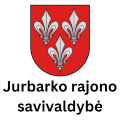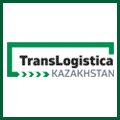Technology is aiding the state’s fight against the virus, and also helping people cope with the stresses of a quarantined life.
While the world grapples with the rapid spread of COVID-19, the tide seems to be turning in China, where the outbreak first began. On March 4, China reported 119 new infections — the lowest in six weeks — of which there were only four new cases outside of Hubei Province, the epicentre. Earlier, on March 1, Hubei had for the first time reported fewer than 200 new infections. If official Chinese statistics may not inspire confidence, there are other more tangible indicators that back up the numbers. In the city of Wuhan, where the epidemic began, authorities on March 1 closed the first makeshift hospital — one of the 16 that the government rapidly constructed — citing the recovery of all of its patients and the declining number of new infections. Fever clinics around the country are reporting a decline in patients.
Chinese officials are rightly cautioning that the fight is far from over. Risks remain when many of the 750 million people, who have been in some form of lockdown, return to work, as they will have to sooner rather than later, to aid an economy now at a standstill.
The response since late January has, however, underlined the two sides of the Chinese system. The most prominent step was the January 23 lockdown effectively quarantining close to 60 million people, which slowed the spread outside of Hubei but also imposed untold costs on the people of the province.
For countries where mass lockdowns are too draconian to contemplate, other Chinese measures, particularly those employed outside of Hubei, may offer some lessons. As epidemiologist Bruce Aylward, who led the Joint Mission comprising 25 Chinese and international doctors, was quoted as saying, “I think the key learning from China is speed. The faster you can find the cases, isolate the cases, and track their close contacts, the more successful you’re going to be.” Two other key steps, he noted, were ensuring free treatment and testing, as well as providing prescriptions for patients for three months rather than the usual one month, to ensure supply of medicines.
Apps for tracking and testing
What has particularly stood out is the role of technology in this effort. One example is a new COVID-19 app that tells people whether they have been in close contact with anyone confirmed infected, based on flight and train records. A government-run close contact detector platform allows companies to check if any employees have been in contact with those infected by checking their national identification numbers. The main telecom operators are sharing location data with authorities to help contact tracing. In the southern city of Wenzhou, which saw a burst of cases because of the city’s traditional business links with Wuhan, more than 3,000 people who visited a noodle shop whose owners contracted the virus were traced through phone data. An app called Pingan Good Doctor, which has 300 million users and connects patients at home with doctors and pharmacies, has noted a surge in the number of users this past month.
In Hangzhou, a city famous for its technology companies, e-commerce giant Alibaba’s Alipay app has rolled out a health QR code system, assigning colour codes to citizens marking their risk level, drawing on their travel history and contacts. A green code means you can travel freely, yellow requires seven days of quarantine, while red requires a 14-day quarantine. This has been rolled out in Zhejiang, Sichuan, Hainan and Chongqing covering close to 200 million people, although the system is far from perfect. Chinese media have reported of numerous cases of wrong codes being assigned, preventing many low-risk citizens from using public transport or going to work. Then there are the privacy issues, with Chinese technology companies and mobile operators freely sharing users’ information with the authorities and police without their consent in the effort to trace and track possible patients.
Coronavirus | China turns to Artificial Intelligence, big data
China, which has invested billions of dollars in new Artificial Intelligence technologies, is deploying some of them in fighting the outbreak. Beijing-based Face++ has come up with a sophisticated temperature screening tool that can work in crowded places and screen thousands of people. It is now deployed in some of Beijing’s subway stations and government offices. In Sichuan province, doctors are using a new 5G telecom network to help remote hospitals — as well as overburdened doctors in the Hubei province epicentre — promptly assess CT scans to detect COVID-19 cases.
Two other prominent AI players, Baidu and SenseTime, are helping police identify people who aren’t wearing masks in public places and offices. In northwestern Yinchuan, authorities have deployed drones armed with loudspeakers — reminding residents to keep a distance from each other and to wear masks — and to spray sanitisers.
Technology is also, in less direct ways, helping a hunkered down population cope with the many stresses of living amid an outbreak. While schools remain closed, classes haven’t stopped, with millions of students receiving lessons every day through live-streaming apps.
Food delivery apps, enabled by a legion of delivery workers who are the unsung heroes of China’s COVID-19 crisis, are delivering essentials on a daily basis, so much so that the Sun Art Retail Group, the country’s biggest hypermarket operator, said its revenues hadn’t declined even though 80% of its outlets were closed. Food delivery app Meituan and e-commerce giant JD have deployed autonomous vehicles for “contactless” deliveries to hospitals and high-risk areas. While the outbreak has crippled much of China’s economy, some businesses have thrived. Virtual classes are booming, whether for fitness, cooking or music. And one of the most popular selling items during China’s COVID-19 crisis? Yoga mats.
From: The Hindu, asiaglobalinstitute




.jpg)






